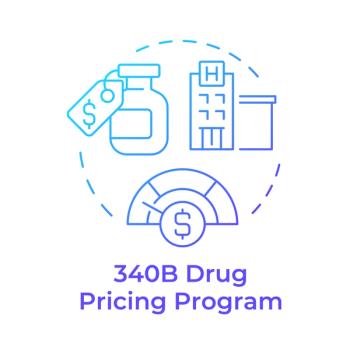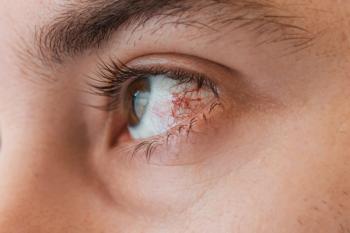
Providers Prepare for Influx of Stroke Patients
Physical therapists can help patients by implementing AI and robotics in rehabilitation treatments and help themselves by adapting to the latest value-based payment models.
Every year, stroke affects
Stroke is often associated with aging, and for good reason––nearly three-quarters of all strokes occur in people older than 65 and each decade after the age of 55, a person’s risk of suffering a stroke compounds by more than doubling, per the
The baby boomer generation is America’s largest and its members, born between 1946 and 1964, are currently aged 55 to 73. That means that all of the members of America’s largest generation are now in the window of compounding stroke risk.
These demographic realities will have several significant implications on the healthcare industry, the most obvious of which is a sustained high volume of stroke patients. It will also create a high demand for physical therapy––both immediately after the initial incident and for extended periods thereafter––as roughly
Demand for physical therapy
Across the world, there are 5 million new stroke survivors every year who require physical therapy. The effects of each person’s stroke are largely up to chance, and depend on where the stroke occurs in the brain and how much tissue is affected, according to the
Related:
If the stroke occurs in the left side of the brain, it can result in paralysis on the right side of the body and vice versa. Understandably, this paralysis can make it more difficult for stroke victims to perform seemingly basic tasks, like feeding themselves, walking around their homes, or getting dressed. Independent living can become difficult or even unmanageable.
To address these challenges many individuals will seek physical therapy and rehabilitation, which have historically relied entirely on human therapists to assist patients in exercises and retraining tasks designed to help patients regain strength and functionality. It is vital that within a few days of an incident of stroke, a patient begins therapy with high intensity in guided, repetitive movement. Typically, this early stage therapy takes place in a patient’s IRF stay. Patients can continue to make progress by continuing their treatment through visits to an ORF.
Over the past 10 years artificial intelligence (AI) and robotics have emerged as proven tools to enhance physical therapy rehabilitation treatment in the early stages at an IRF and on an ongoing basis especially at an ORF.
Optimizing physical therapy
Physical therapy provided by human therapists has served countless patients over the years. One of the significant limitations to therapy effectiveness is a human being’s ability to constantly quantify results and make corresponding gradual refinements to patient movements.
A
Physical therapy with human therapists typically records between 32 and 80 upper limb movements per one-hour session, compared to between 600 and 1,000 recorded movements per one-hour session with AI and robotics. This drastic increase in repetitions (roughly 3,000%) can make all the difference in the world to a patient, both physically and psychologically.
Physically, any improvement that can potentially help patients regain mobility sooner should be welcomed by all involved. Psychologically, rehabilitation can be an emotional endeavor as patients encounter ups and downs on their road to recovery. Knowing that they’re making rapid progress can motivate patients to continue working hard.
Payment models
To care providers, quantifiable patient improvement can be especially valuable in the face of evolving payment models. Value-based payment models are becoming increasingly common across the healthcare spectrum and could potentially upend traditional healthcare business models and patient care, according to
In value-based payment models, providers are rewarded for delivering a higher quality of care to patients, as opposed to the tradition of rewarding time spent caring for patients. This incentivizes providers to deliver better care in less time, which matches patient desires and healthcare objectives. With that in mind, providers should optimize their business and care practices for value-based care.
The post-acute care rehabilitation industry is at a pivotal moment in terms of modifying treatment protocols and providing effective documentation to respond to new rules and future direction stated by the Centers for Medicare and Medicaid Services (CMS).
According to the
Making these transitions require IRFs and physical therapy practices to accurately measure the quality of treatment provided to patients. Especially in IRFs, a patient’s progress in physical therapy is not only a measure of the therapy effectiveness, but also a measure of the facility’s overall performance or quality. To help IRFs measure performance,
The better that physical therapists and practices can measure the quality of care they deliver, the better they will fare in rapidly expanding value-based payment models.
Looking forward
Stroke claims millions of victims globally each year and while patients can reduce their chances of suffering strokes by making
Anticipating a continued influx of physical therapy patients, providers can help patients by implementing the latest AI and robotics in rehabilitation treatments and help themselves within that same infrastructure by adapting to the latest value-based payment models. If more accurate measurement of quality is key in increasing revenue under value-based payment models, then more accurate measurements of patient progress in physical therapy by using AI and robotics warrants consideration from physical therapists and practices looking to adapt. The industry can see this coming, so there’s every reason to be prepared.
Dr. Eric Dusseux is chief executive officer of
Newsletter
Get the latest industry news, event updates, and more from Managed healthcare Executive.






















































